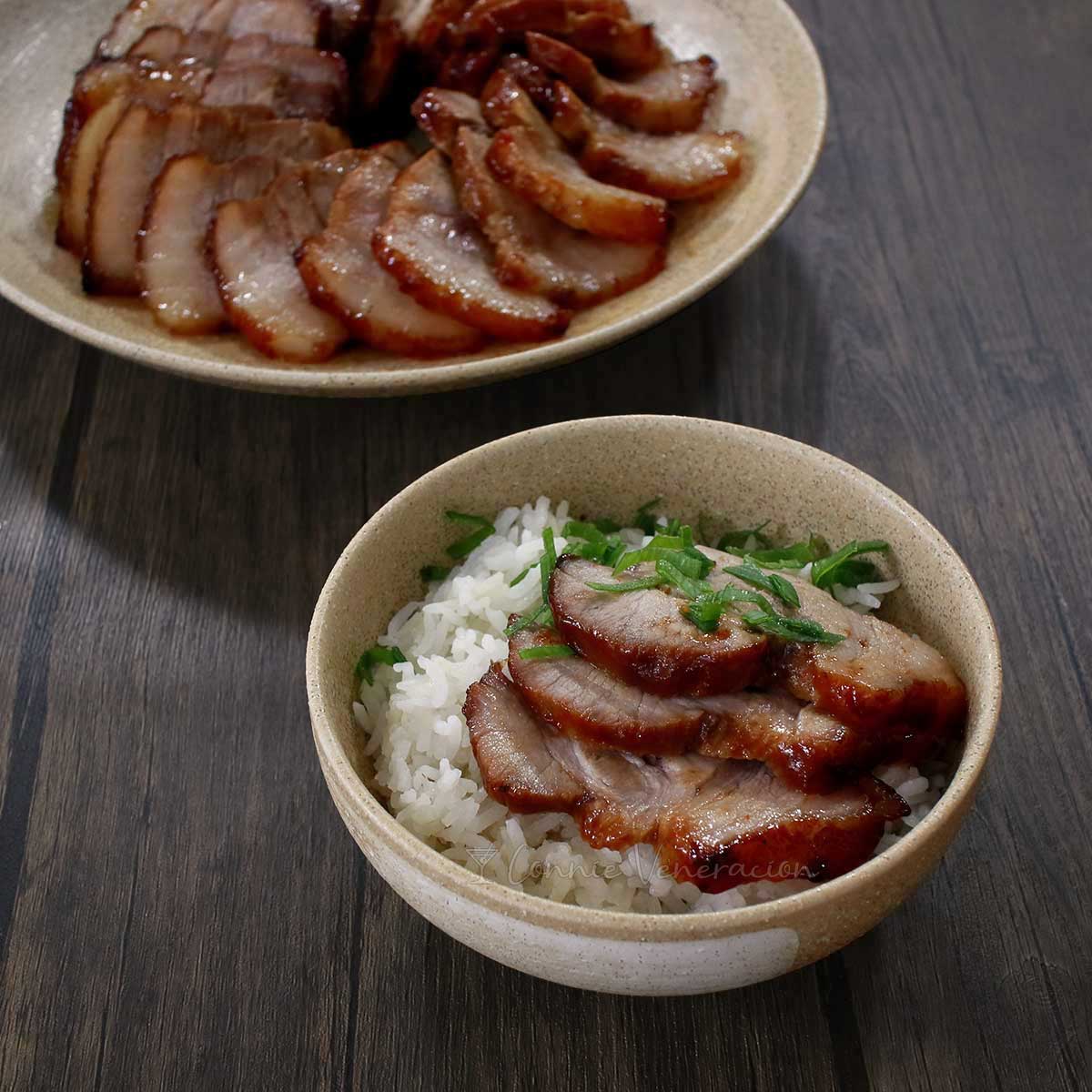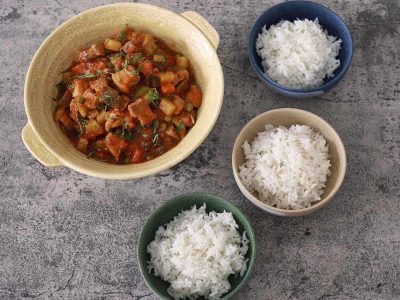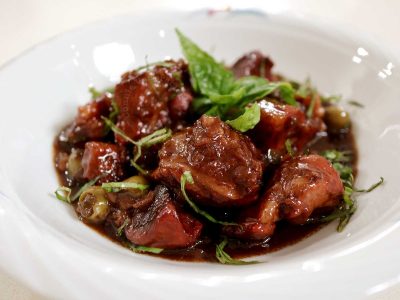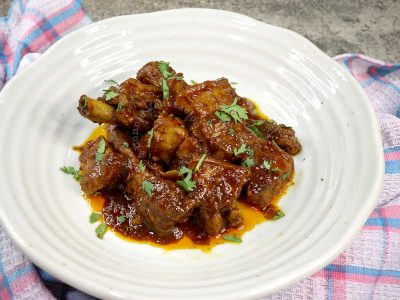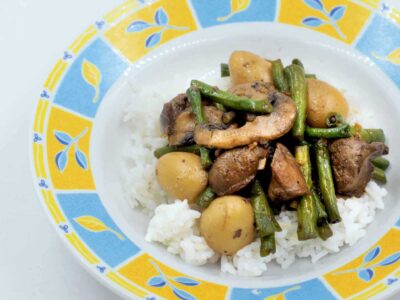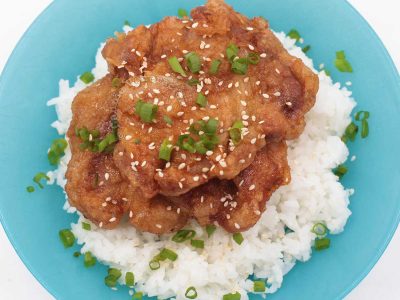You’ve seen them hanging from metal hooks alongside roast duck and chicken in front of Chinese restaurants. When you order a platter of cold meat, one is taken down, the required amount for an order is cut into slices, the remainder is pierced with a hook once more and goes back on display.
If you’ve not encountered a display of roast meat and poultry through a glass window of a Chinese restaurant, but you’ve enjoyed fried rice, pork bao or pork noodle soup, you’ve had char siu although you may not have been aware of it.
See, char siu is served in so many ways. Sliced, it can go not only on a platter of cold meat, but also on top of hot rice in a bowl, or as the meat component of a noodle soup. Chopped, it can be stirred into fried rice or used as filling for bao.
Most people regard char siu as a treat that can only be enjoyed at a Chinese restaurant. But the truth is that it is not difficult to make restaurant-quality char siu at home. You can. But you need a good piece of pork, the correct ingredients for the marinade (they are all available in Asian groceries) and the ideal cooking method.
Marinating the pork overnight is crucial
In English-speaking regions, char siu is often nicknamed “Chinese BBQ” and that’s not without a reason. The appearance and taste are not that dissimilar from other meat BBQs. After roasting, the meat surface is brownish, and the flavor is sweet and salty.
But char siu has a distinctive aroma and flavor that many of us instinctively associate with Chinese cuisine. That’s because half of the ingredients in the marinade are Chinese in origin. Without them, char siu will not taste and smell the way it should.
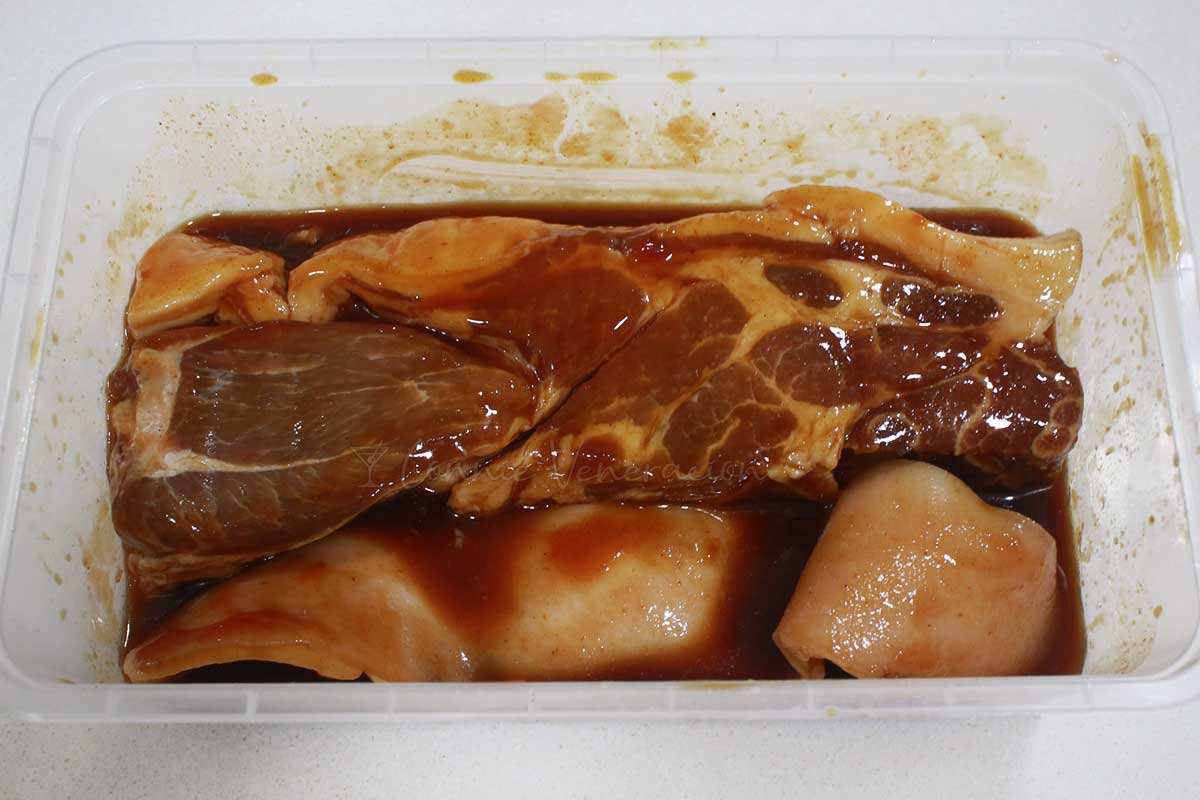
Five-spice powder takes center stage in the marinade. Not that you need a lot of the stuff. When using Chinese five-spice powder, a little goes a long way. Overdo it and you’ll likely ruin the dish. It’s potent stuff, this five-spice powder. Half a teaspoon for a kilogram of pork is just right. Of course, there are other ingredients in the marinade. They’re listed in the recipe below so I won’t go into that now.
The other important thing about the marinade is that it should have enough time to permeate the meat. That means leaving the pork to soak it up overnight in the fridge.
Roast the pork on a rack
Why a rack? To mimic a grill. You want the dry heat of the oven to touch every inch of the pork evenly. And that won’t happen if the pork is resting directly on a baking sheet or tray.
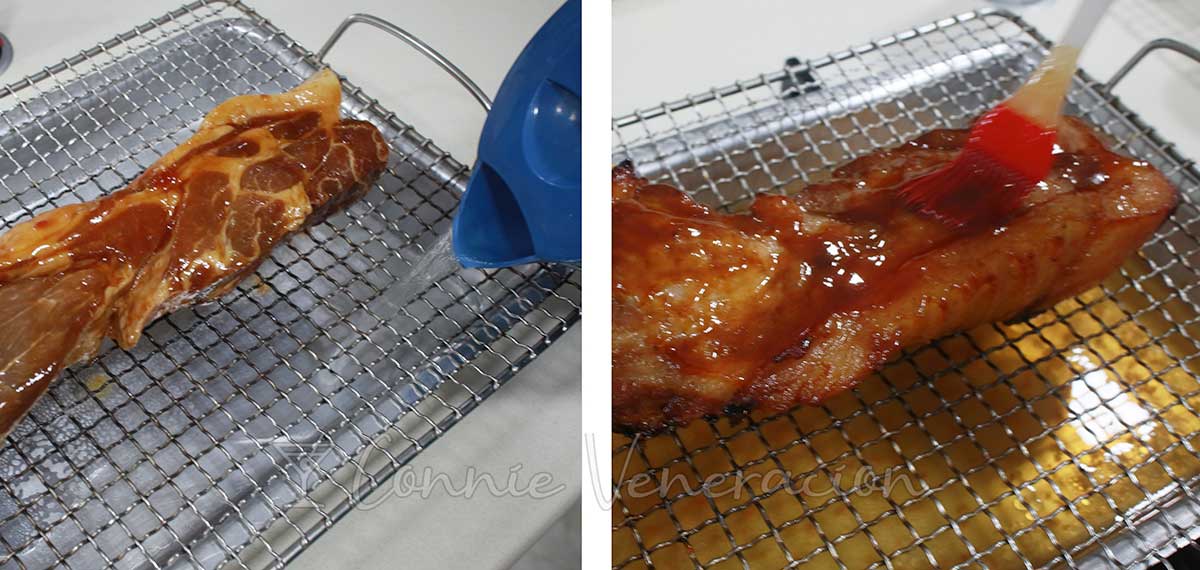
The better way to cook char siu is to place it on a rack set over a baking tray. Pour an inch or so of water into the tray so that the drippings will not scorch and create smoke in the oven.
Don’t think that smoke from scorched drippings will give your char siu a delightful smoky flavor or aroma. Smoking meat means cooking slowly in wood chosen specially for the aroma. Smoke from scorched drippings smells nothing like that. It’s nasty, really, and your kitchen will smell just as bad. So, a rack over a tray and water in the tray.
The pork is roasted at 420F initially for 15 minutes. Then, the pork is flipped and is roasted for another 15 minutes at 400F. The meat is taken out of the oven, the entire surface is brushed with the leftover marinade to which honey had been added. This is to give the crusted surface a caramelized texture that is both glossy and sticky.
After brushing the pork with the marinade, it goes back into the oven where it roasts for another 20 minutes at 375F. It is fully cooked after a total cooking time of 50 minutes but don’t get too excited yet because the meat has to rest first.
Rest the char siu before slicing
Right out of the oven, the meat juices are still moving around. If you slice the pork at this point, the juices will just drip off. You don’t want that. You want them to be retained by the meat.
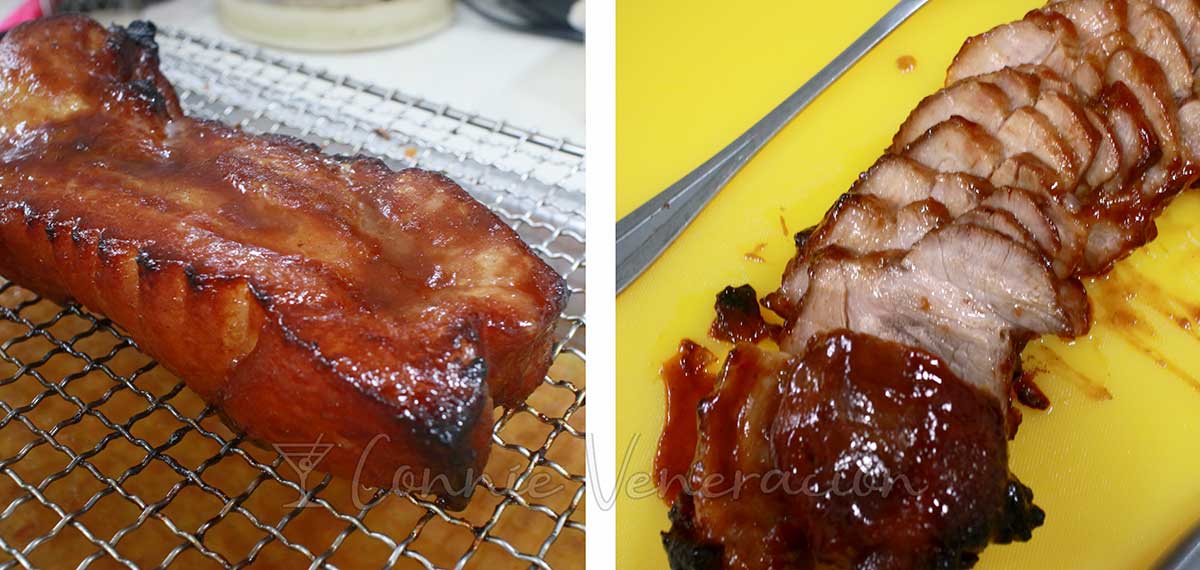
If you haven’t heard of resting meat to let the juices settle down, well, just think of hot water. When it’s boiling, it gets all agitated, right? It’s the same with meat juices. Coming out of a hot oven, they are agitated. Resting calms them down. Once they calm down, they will settle down and stay where they are — in the meat. And you will feel them in your mouth with every bite. So, rest the char siu before slicing.
Char siu (Cantonese-style pork BBQ)
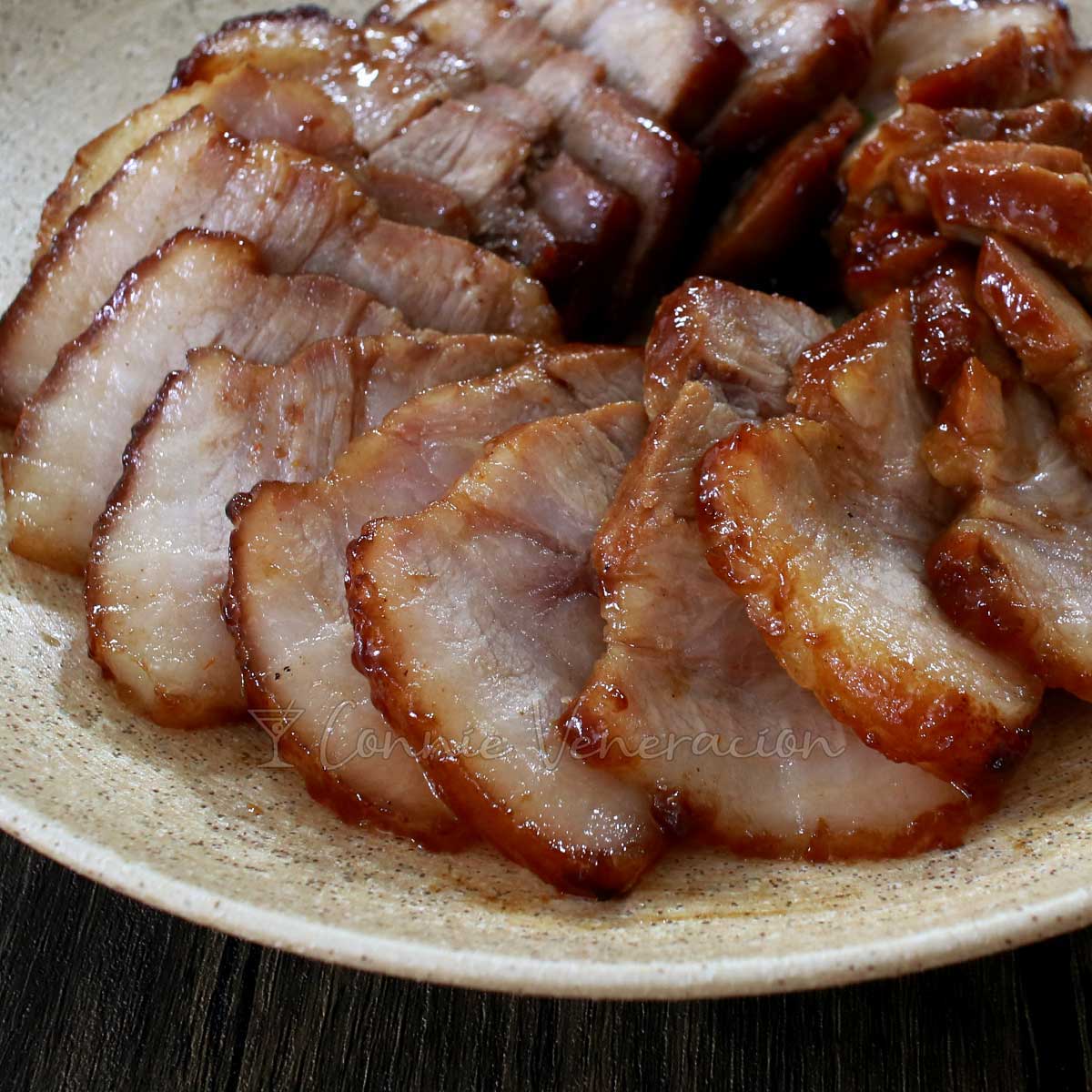
Ingredients
- 1 kilogram skinless pork shoulder (butt) do not trim off the fat
Marinade
- ½ teaspoon Chinese five-spice powder
- 2 tablespoons soy sauce
- 2 tablespoons hoisin sauce
- 2 tablespoons Shao Xing rice wine
- ½ teaspoon sesame seed oil
- 1 teaspoon salt
- ¼ teaspoon white pepper
- 1 tablespoon white sugar
- 2 tablespoons dark brown sugar
- 1 tablespoon honey
- 1 tablespoon grated garlic
For brushing
- 2 tablespoons marinade
- 2 tablespoons honey
Instructions
Marinate the pork
- Rinse the pork, pat dry with paper towels and place in a shallow bowl.
- Mix all the ingredients for the marinade until the sugar and salt are fully dissolved.
- Pour the marinade over the pork then massage into the meat.
- Cover the bowl and keep in the fridge overnight. For bette results, turn the pork over midway.
Roast the pork
- Preheat the oven to 420F.
- Place a rack over a tray and position the pork on the rack (reserve the marinade left in the bowl where the pork had soaked).
- Pour an inch of water into the tray.
- Roast the pork for 15 minutes, turn it over and roast for another 15 minutes at 400F (if the pork is well browned after the first 15 minutes, roast at 375F instead of 400F for the next 15 minutes).
- Take the pork out of the oven and brush the surface with the marinade-honey mixture.
- Turn down the heat to 375F (if you haven't already) and roast the pork for another 20 minutes.
Rest the pork and slice
- Take the tray out of the oven and place a foil tent loosely over the pork. Leave to rest for at least 10 minutes.
- Transfer the char siu to a cutting board and slice.

